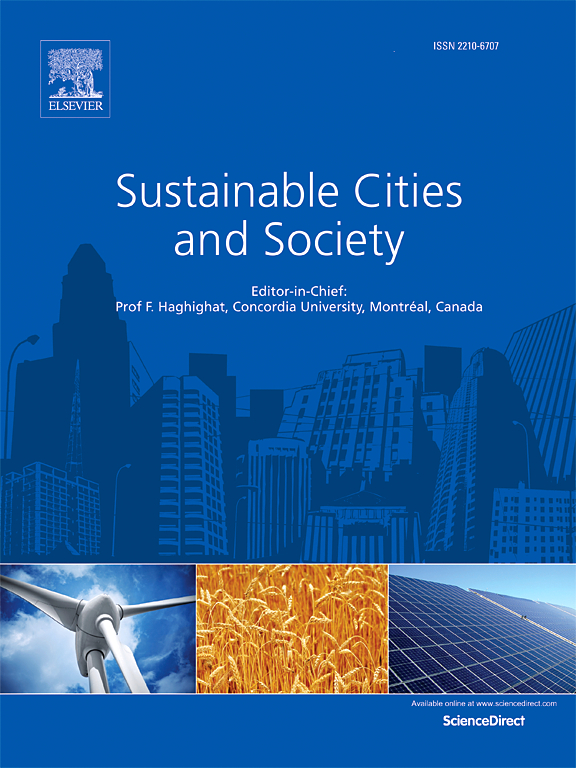Precise mitigation strategies for urban heat island effect in Hong Kong's new towns using automated machine learning
IF 10.5
1区 工程技术
Q1 CONSTRUCTION & BUILDING TECHNOLOGY
引用次数: 0
Abstract
New town developments aim to enhance the spatial layout and quality of living environments in metropolitan areas. These areas are vulnerable to the urban heat island (UHI) effect owing to high-density development and poor long-term planning. However, few studies have investigated the spatial distribution of the influence of built environments on UHI, limiting the ability of urban planners to develop targeted mitigation strategies. To address this gap, we analyzed the complex spatial relationship between land surface temperature (LST), an important indicator of UHI, and the built environment in all new towns in Hong Kong. We employed remote sensing images, street view images, geographical information science (GIS) data, and land-use data with automated machine learning to model the LST-built environmental relationship at various spatial scales, using Shapley Additive Explanations (SHAP) to interpret the model to show the spatial distribution of the influence of the built environment on UHI. Our best model was the Extreme Gradient Boosting Machine model with a 210-m grid R-squared value of 0.79. We found that 1) the land-use feature class had the most significant influence on LST, and 2) there was spatial heterogeneity among the major contributors to UHI. The refined UHI attribution analysis method proposed in this study enables precise modeling for smart and sustainable city planning. (211 words)
求助全文
约1分钟内获得全文
求助全文
来源期刊

Sustainable Cities and Society
Social Sciences-Geography, Planning and Development
CiteScore
22.00
自引率
13.70%
发文量
810
审稿时长
27 days
期刊介绍:
Sustainable Cities and Society (SCS) is an international journal that focuses on fundamental and applied research to promote environmentally sustainable and socially resilient cities. The journal welcomes cross-cutting, multi-disciplinary research in various areas, including:
1. Smart cities and resilient environments;
2. Alternative/clean energy sources, energy distribution, distributed energy generation, and energy demand reduction/management;
3. Monitoring and improving air quality in built environment and cities (e.g., healthy built environment and air quality management);
4. Energy efficient, low/zero carbon, and green buildings/communities;
5. Climate change mitigation and adaptation in urban environments;
6. Green infrastructure and BMPs;
7. Environmental Footprint accounting and management;
8. Urban agriculture and forestry;
9. ICT, smart grid and intelligent infrastructure;
10. Urban design/planning, regulations, legislation, certification, economics, and policy;
11. Social aspects, impacts and resiliency of cities;
12. Behavior monitoring, analysis and change within urban communities;
13. Health monitoring and improvement;
14. Nexus issues related to sustainable cities and societies;
15. Smart city governance;
16. Decision Support Systems for trade-off and uncertainty analysis for improved management of cities and society;
17. Big data, machine learning, and artificial intelligence applications and case studies;
18. Critical infrastructure protection, including security, privacy, forensics, and reliability issues of cyber-physical systems.
19. Water footprint reduction and urban water distribution, harvesting, treatment, reuse and management;
20. Waste reduction and recycling;
21. Wastewater collection, treatment and recycling;
22. Smart, clean and healthy transportation systems and infrastructure;
 求助内容:
求助内容: 应助结果提醒方式:
应助结果提醒方式:


